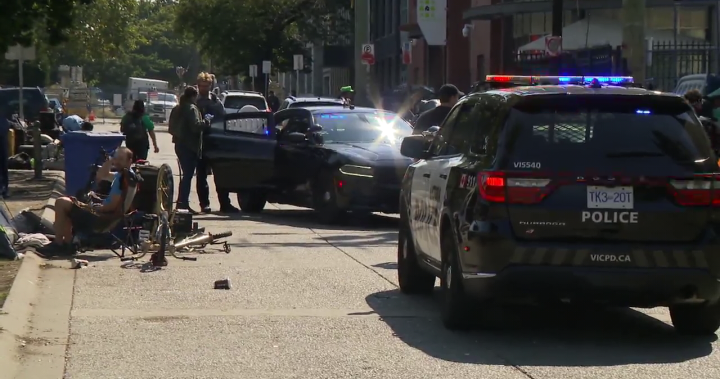As afternoon sun sliced through the windows of Victoria City Hall last Thursday, council members voted 7-2 to approve a substantial $10 million community safety package that promises to reshape downtown Victoria. The funding comes as residents and business owners have increasingly voiced concerns about public disorder, open drug use, and property crime in the city’s core.
“We’re taking a balanced approach that addresses both immediate safety concerns and the underlying causes,” explained Mayor Marianne Alto following the tense four-hour council session. “This isn’t about choosing between compassion and safety—it’s about delivering both.”
The comprehensive package directs funds across three main priorities: supportive housing initiatives, enhanced police presence in trouble spots, and expanded mental health outreach teams. About $4.2 million will bolster housing supports, while $3.8 million increases police resources specifically for downtown patrols. The remaining $2 million expands mental health response teams that pair officers with psychiatric nurses.
According to Victoria Police Department data released last month, downtown calls for service have jumped 27% since 2022, with property crime and public disorder complaints accounting for most of the increase. Small business owners like Samantha Chen, who runs a café on Government Street, have felt the impact directly.
“I’ve had my windows smashed twice this year already,” Chen told me when I visited her shop yesterday. She gestured toward a newly installed security gate. “I support helping vulnerable people, but my customers don’t feel safe anymore. Something needed to change.”
The funding package arrives amid heated provincial debates about public safety approaches. Premier David Eby’s government recently announced its own $23 million provincial initiative targeting repeat offenders and expanding treatment options across B.C. Victoria’s plan will complement these provincial efforts while focusing on city-specific concerns.
Not everyone sees the council’s approach as balanced. Councillor Susan Kim, one of two dissenting votes, criticized the allocation as overly enforcement-focused. “We’re investing too heavily in policing solutions when what we really need is housing and healthcare,” she argued during deliberations.
Housing advocates like Tanya Patterson from the Victoria Housing Network expressed mixed feelings about the package. “The additional housing resources are desperately needed,” Patterson acknowledged when I spoke with her by phone. “But we’re concerned about increased criminalization of poverty through expanded police presence.”
The Victoria Chamber of Commerce, however, has thrown full support behind the initiative. In a statement released Friday, Chamber CEO Bruce Williams called it “a crucial first step toward restoring confidence in our downtown core,” noting that member businesses have reported declining foot traffic as public perception of safety has deteriorated.
Implementation begins next month with the expansion of downtown foot patrols. The housing components, including 40 new supportive housing units and expanded outreach services, will roll out over the next six months according to city documents.
For residents like Eleanor Martinez, who lives in a downtown condo with her young family, the news brings cautious optimism. “I want my kids to feel safe walking to the library,” she told me at Saturday’s farmers market. “But I also want them to grow up in a compassionate city that takes care of everyone. I hope this plan can actually deliver both.”
The funding package isn’t without financial implications for Victoria residents. Property taxes will increase approximately 1.8% to cover the new expenditures, translating to roughly $68 annually for the average homeowner.
Chief Constable Del Manak praised council’s decision while emphasizing that policing alone can’t solve complex social issues. “This gives us the resources to address immediate public safety concerns,” he noted at Friday’s press conference. “But the real success will come from our partnerships with health services and housing providers.”
What makes Victoria’s approach notable is its commitment to measuring outcomes. The package includes quarterly reporting requirements, with clear metrics for both crime reduction and housing placement success. City staff must present the first progress report by September, allowing for potential course corrections if needed.
As Canadian cities struggle with similar challenges around affordability, mental health, and substance use, Victoria’s approach will be closely watched. Vancouver, Calgary, and Toronto have all announced similar multi-pronged safety initiatives in recent months, though Victoria’s per capita investment ranks among the highest.
The true test of the plan’s effectiveness won’t come from council chambers or press releases, but from the lived experiences of downtown residents, business owners, and those struggling with housing insecurity. For now, Victoria has placed its bet on a balanced approach—one that acknowledges both the complexity of the issues and the urgency of addressing them.






